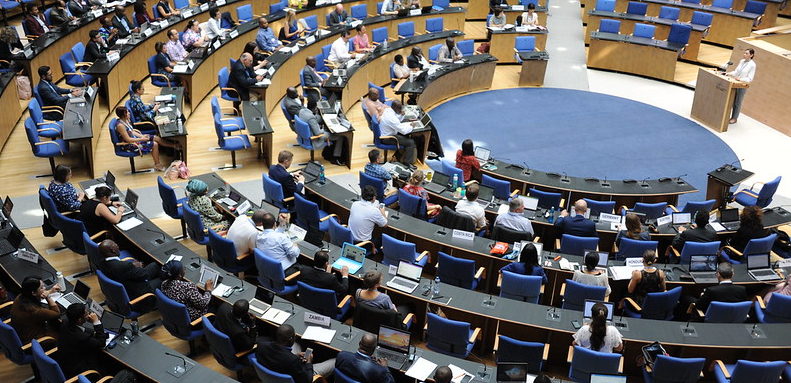As stated in the paper Enhancing NDCs for food systems.
Recommendations for decision-makers “Food system activities including from agriculture and land use, storage, transport, packaging, processing, retail and consumption including food loss and waste are responsible for 21 to 37% of anthropogenic GHG emissions every year.” So heading into COP26, SIANI aimed to focus on food systems conversations. The only trouble was that none of the days’ themes focused the topic of food systems. Why are food systems not on the agenda? Without space for discussions, we will struggle to properly recognise the contribution that these sectors can make to the global mitigation effort within the United Nations Framework Convention on Climate Change (UNFCCC).
Mechanisms available for addressing food system issues
Let’s look at it closely. Under the UNFCCC and the Paris Agreement, there are two processes, in particular, stand out as having considerable potential for addressing food system issues: the Koronivia Joint Work on Agriculture (KJWA) and the Nationally Determined Contributions (NDCs). NDCs are national plans containing targets on emissions cuts, and countries are expected to revise or resubmit their NDCs every five years. Ahead of COP26, a systematic analysis conducted by the Food, Environment, Land, and Development (FELD) Action Tracker looked at the first set of fifteen updated or enhanced NDCs, spotting that “Only half of the NDCs analysed mention policies that are explicitly linked to actions in the food and land sector”. Six years on from the Paris Agreement, most G20 members are still showing “weak commitments to transform food and land use systems to reach net-zero emissions”. So, while many countries mention the agricultural sector in their NDCs, very few set targets concerning other stages of the food system.
The KJWA addresses issues related to agriculture and provides guidance to the development of NDCs through international workshops which have an impact on financing entities and help to align international organizations and processes in their work on agriculture, climate change and food security.
At COP26, the KJWA reached its completion. Parties and observers reported on progress of soils, nutrient use, water, livestock, methods for assessing adaptation, and the socio-economic and food security dimensions of climate change across the agricultural sectors as well as the potential future topics. This is extremely important from the outcomes of the KJWA, we can understand the potential future of agriculture under the UNFCCC. To this purpose, the KJWA is the only pathway to agricultural development and food security under the UNFCCC.
Key outcomes from KJWA
Since KJWA represents a unique pathway from formal discussions to concrete action, we can review the main conclusions after four years.
- Recognition of soil and nutrient management practices, sustainable land and water management, and sustainably managed livestock systems.
- Inclusion of a reference to “agroecology” – to be agreed at COP27.
- Recognition of the co-benefits resulting from adaptation and mitigation action in agriculture.
- Prioritisation of safeguarding food security and ending hunger.
During the COP26, the Subsidiary Body for Scientific and Technological Advice and the Subsidiary Body for Implementation proposed draft conclusions recognizing this work. These findings and the Koronivia roadmap will now be debated at the 56th session of the subsidiary bodies at COP27 in June 2022.
In parallel, many side events focused on agriculture, food systems and the KJWA. Among them the session on current activities and potential future options for the KJWA stressed the need to empower farmers and young people to implement Koronivia on the ground. Along the same line, the FAO organised a panel discussion for parties and non-state actors involved in the KJWA negotiation process, to share their views on how to move the landmark agriculture decision from in-session workshops to implementation of practical actions.
What’s next for the KJWA?
There was wide agreement on the need to work on agriculture under the UNFCCC process working towards taking a decision in 2022 at COP 27. SIANI is looking forward to a solid step forward increasing agriculture’s role in international efforts to address climate change, as now more than ever it has become increasingly urgent to understand the potential future of agriculture.
Indeed, the KJWA has proved a useful platform for a global discussion on how agriculture can contribute to the effective implementation of the Paris Agreement. However, as the KJWA was the only piece of the UNFCCC that discussed agriculture shows that its voice was not as clear as it needs to be.
